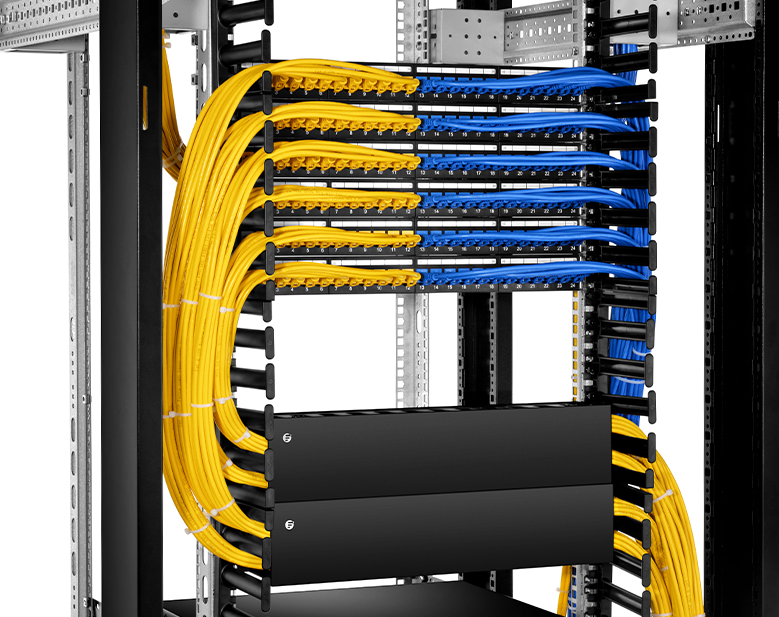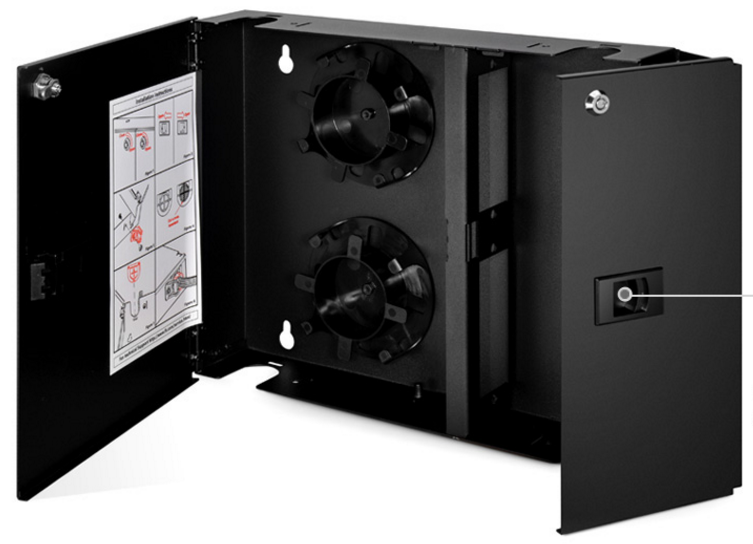As a patch panel offers people easy cable management, it has been widely acknowledged by more and more users and expertise. When choosing a patch panel, a lot of factors can be considered, like types and designs. I would like to recommend you patch panels from there perspectives, that is, cabling system, port density, and space saving.
Cabling System of Patch Panel
As we all know, the patch panel used in fiber cabling system is called fiber patch panel and the one used in copper cabling systems named copper patch panel. As far as I am concerned, the fiber patch panel deserves the higher price since it is a lot easier to install. However, copper patch panel can also be your first choice as it is cost-efficient and durable, like the Cat6 patch panel introduced in the next part.
1U High 19" fiber patch panel is easy to install for better deployment and expand your network for interconnection and cross-connection inside the rack mount and cabinet. It has 24 ports and is available with two adapter types: SC and LC duplex.
Specially designed for Gigabit Ethernet applications, Cat6 Ethernet patch panel meets and even exceeds the TIA/EIA 568 industry specification, and are compatible with all kinds of Cat6 cables and related accessories. Besides, Cat6 patch panels feature high-density and offer the performance required for present and next generation data communications networks and applications.

Port Density of Patch Panel
Port density seems to be a main concern when choosing a patch panel. The patch panel with more ports enables more connectivity. Common patch panels are always designed in 8 or 12-port configurations. While high-density patch panels are available in flat and angled designs with 24 or 48 ports configurations. High-density patch panel is suitable for installations with limited space.
Take the Cat6 Ethernet patch panels we mentioned above as an example, as high-density patch panels, they are available in 12-port, 24-port, 48-port configurations, and feature enhanced front and rear labeling mark for easy circuit identification. In addition, the cat6 patch panel provided by FS.COM contains user-friendly number coding and removable rear cable manager which is conducive to uninstall and install.

Space Saved by Patch Panel
In general, I, myself, prefer wall mount patch panel to rack mount patch panel, because it is installed above the floor, sparing much space for other equipment standing on the ground.
Wall mount patch panel provided by FS.COM possesses number labeling for easy outlet identification, and is used to provide the critical connection between various fiber cables and optical equipment fixed on the customer’s house or office, offering networking and fiber distribution from the wiring closet to the user’s terminal equipment. Furthermore, it can be fixed quickly and easily to the wall using four screws.

Conclusion
Hope you have saved a lot of time and energy by checking out the list we have above. However, another aspect not mentioned is the budget, as many people would struck in a dilemma that whether to choose a patch panel only for now or the expensive one for future. Considering this, you can first choose what function and performance you actually need, then compare the price of the same type of patch panel between different vendors. Here I can assure you that FS.COM can provide you with best quality and reasonable price. If you have puzzles, please do not hesitate to contact us.
:: بازدید از این مطلب : 78
|
امتیاز مطلب : 0
|
تعداد امتیازدهندگان : 0
|
مجموع امتیاز : 0

